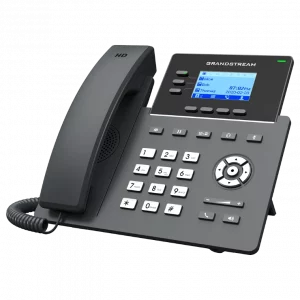
Beginner’s Guide to Enterprise SIP Trunking Essentials
Introduction
In the changing landscape of business communications, a revolution is happening. It’s called SIP Trunking. At its core, SIP Trunking is turning our old way of making phone calls on its head. Gone are the days when businesses were bound by physical phone lines and limited calling capabilities.
SIP Trunking represents the next chapter in the evolution of communication. This technology allows businesses to send voice, video, and text communications through the internet. Unlike the traditional phone system, SIP Trunking offers flexibility, scalability, and cost savings.
For small to medium-sized businesses looking to modernize their communications, SIP Trunking is not just a choice—it’s a leap towards future-proofing your operations. Whether you’re communicating with customers or team members, SIP Trunking paves the way for a more connected, efficient, and versatile communication strategy.
To give you a quick overview:
- SIP Trunking simplifies communications, allowing voice, video, and messaging services through a single line.
- It offers significant cost savings over traditional phone lines by using the internet to make calls.
- Scalability is a breeze, meaning you can easily adjust your communication needs as your business grows.
Imagine this: Your business, no longer tethered by the limitations of traditional telephony, empowered to reach out globally without the fear of exorbitant costs, and flexible enough to scale services with just a few clicks.

External Links for Further Reading:
– Session Initiation Protocol (SIP) on Wikipedia
– What is VoIP? – Federal Communications Commission
– Understanding IP Trunking – TechTarget
– Benefits of SIP Trunking – Forbes
– Choosing a SIP Provider – Business News Daily
Understanding SIP Trunking
When we talk about enterprise SIP trunking, it’s like stepping into the future of communication, leaving behind the old, tangled wires of traditional phone systems. Let’s dive into what SIP trunking is, how it works, and how it’s different (and better) than the old ways.
What Is SIP Trunking?
Simply put, SIP (Session Initiation Protocol) trunking is a method of sending voice and other unified communications services over the internet. It replaces traditional telephone lines, allowing businesses to communicate more effectively. SIP trunking uses a packet-switched network, where voice calls are broken down into digital packets and sent across a network, rather than via the circuit-switched networks of traditional telephony.
How Does It Work?
Imagine you’re sending a letter, but instead of sending it whole, you break it down into smaller pieces, send each piece via different routes, and then put it back together at the destination. That’s essentially how SIP trunking works with your voice calls.
Your voice is converted into digital data, sent over the internet, and then converted back into voice at the other end. This process allows for more efficient use of bandwidth and significantly reduces costs, especially for long-distance and international calls.
SIP vs VoIP
While SIP and VoIP (Voice over Internet Protocol) are often used interchangeably, there’s a slight difference. VoIP is a broad term that refers to any phone call made over the internet, rather than over traditional telephone lines. SIP, on the other hand, is a specific protocol used to enable VoIP. Think of VoIP as the overall method of making calls over the internet, and SIP as one of the languages that can be used to do so.
VoIP encompasses a range of technologies that allow voice communications to be transmitted over the internet. SIP is one of these technologies, providing the rules for how to set up, manage, and tear down these voice communications.
Why Enterprise SIP Trunking?
For businesses, the shift to enterprise SIP trunking from traditional telephony isn’t just about keeping up with technology. It’s about embracing a solution that offers scalability, flexibility, and significant cost savings. With SIP trunking, businesses can easily adjust their communication needs, add new lines, and integrate with various digital communication tools without the need for physical hardware changes.
Moreover, the quality of communication improves. SIP trunking offers clearer voice quality and the ability to transmit multimedia content, such as video and text, alongside voice. This enhances the overall communication experience within enterprises and with customers.

In conclusion, understanding SIP trunking is the first step towards transforming your business’s communication infrastructure. It’s about making your business more flexible, more scalable, and ready for whatever the future holds.
For further reading and to deepen your understanding, I recommend checking out these resources:
- Session Initiation Protocol (SIP) on Wikipedia
- What is VoIP? – Federal Communications Commission
- Understanding IP Trunking – TechTarget
And for a deeper dive into how it all works, here’s an excellent explanation on Quora about what a SIP trunk is.
Benefits of Enterprise SIP Trunking
When we talk about enterprise SIP trunking, we’re discussing a game-changer in business communications. Here’s why:
Cost-effectiveness
Save Money, Seriously. Traditional phone lines can be a financial drain, with costs for long-distance calls, maintenance, and physical infrastructure adding up quickly. With SIP trunking, you’re moving your calls over the internet. This means you can say goodbye to those hefty phone bills. Long-distance and international calls become significantly cheaper because they’re treated as local calls. This shift can lead to substantial savings, making your finance team very happy.
Scalability
Grow as You Go. One of the beauties of SIP trunking is its scalability. Whether your business is rapidly expanding or you have seasonal fluctuations in call volume, SIP trunks adapt to your needs. You can easily add or remove lines with just a few clicks, ensuring you only pay for what you need. This flexibility is a stark contrast to traditional phone systems, where scaling up often means installing new lines and waiting on service providers.
Flexibility
Work from Anywhere. The modern workplace is evolving. More businesses are adopting remote or hybrid work models. SIP trunking fits perfectly into this shift, allowing your employees to connect from anywhere in the world. All they need is an internet connection. This flexibility ensures that your team can stay connected and productive, no matter where they are.
Reliability
Stay Connected, Always. Reliability is crucial in business communications. SIP trunking offers enhanced reliability over traditional phone lines. With features like failover and load balancing, calls can be rerouted in the event of an outage, ensuring that your business stays up and running. Moreover, many providers offer robust service level agreements (SLAs) to guarantee uptime and quality of service.
As we move into the next section on Key Features of SIP Trunking Services, it’s clear that embracing enterprise SIP trunking can offer your business significant advantages in cost-savings, scalability, flexibility, and reliability. These benefits not only streamline your communications but also support your business’s growth and adaptability in the ever-changing market landscape.
For more insights into the transformative impact of SIP trunking, consider exploring further through resources like Forbes on the Benefits of SIP Trunking.
Key Features of SIP Trunking Services
Transitioning from the overarching benefits of enterprise SIP trunking, let’s delve into the specific features that make SIP trunking a standout choice for modern businesses. These features not only enhance your communication capabilities but also provide a robust framework for reliability and efficiency.
Call Forwarding
Imagine you’re out of the office, and an important call comes in. With Call Forwarding, you don’t have to miss it. This feature allows calls to your office phone to be redirected to another number, like your mobile phone, ensuring that you’re always reachable, no matter where you are. It’s like having your office in your pocket.
Caller ID (CNAM)
Knowing who’s calling before you pick up the phone can be pivotal. Caller ID is more than just a convenience; it’s a business intelligence tool. It presents the caller’s name and number, allowing you to prepare for the conversation ahead or prioritize calls based on urgency or importance.
Direct Inward Dial (DID)
Direct Inward Dial lets you assign unique numbers to each employee without needing multiple physical phone lines. It’s like giving everyone in your company their direct line, making it easier for clients to reach the person they’re looking for without navigating a complex phone menu.
Failover/Overflow
What happens when your primary line fails or is busy? With Failover/Overflow, calls are automatically rerouted to a secondary line, ensuring business continuity and preventing missed opportunities. This feature is crucial for maintaining seamless communication, especially during high call volumes or unexpected outages.
International Calling
Expanding your business globally requires a communication system that breaks down geographical barriers without breaking the bank. International Calling with SIP trunking offers cost-effective rates for worldwide calls, enabling you to connect with international clients, partners, and remote teams efficiently.
These key features of SIP trunking services highlight the system’s flexibility, reliability, and efficiency. By implementing these services, businesses can enjoy a smoother, more streamlined communication experience that supports their growth and global reach.
For a deeper understanding of SIP trunking and its capabilities, consider exploring resources such as What is VoIP? – Federal Communications Commission and Understanding IP Trunking – TechTarget.
Moving forward, let’s examine how to implement these SIP trunking features in your business, including choosing a provider, configuration, and integration with existing systems.
Implementing SIP Trunking in Your Business
Choosing a Provider
Finding the Right Fit: Start by listing your business communication needs. Consider factors like call volume, international calling needs, and the level of customer service you expect. This will help you narrow down your choices to providers who can truly support your business’s unique requirements.
Reliability is Key: Your business can’t afford dropped calls or poor quality. Look for providers with a strong track record of uptime and quality of service. A provider like SIP.US, known for its robust service and consistent performance, can be a safe bet.
Scalability for the Future: As your business grows, your communication needs will too. Choose a provider that makes scaling up (or down) easy without hefty fees or complex processes.
Security Must-Haves: Ensure the provider takes security seriously. This includes encryption of voice data and protection against fraud and hacking attempts. Security considerations are non-negotiable in today’s digital landscape.
Configuration
Technical Setup: Configuring your SIP trunk is the next step. This involves setting up your PBX (Private Branch Exchange) to connect with your SIP provider’s network. Providers usually offer guides or direct support to help you through this process. It’s critical to follow these guidelines closely to ensure everything works smoothly.
Network Assessment: Before going live, assess your network to ensure it can handle the additional load. This might involve upgrading your internet connection or making adjustments to your internal network setup to prioritize voice traffic.
Integration with Existing Systems
Seamless Connectivity: If you’re using existing communication tools or CRM systems, look for a SIP trunk provider that supports integration with these platforms. This can streamline your workflows and improve efficiency by keeping all your communication tools connected.
Microsoft Teams Example: For businesses using Microsoft Teams, some SIP trunk providers offer direct integration, allowing you to make and receive calls through Teams using your SIP trunk. This kind of integration simplifies communication and leverages the power of both platforms.
Security Considerations
Protect Your Data: Voice data can be as sensitive as any other business data. Ensure your provider uses strong encryption for all communication. This helps protect your calls from eavesdropping and interception.
Regular Updates and Patches: Work with a provider that regularly updates their systems to protect against new vulnerabilities. They should also offer guidance on best practices for securing your end of the connection.
Fraud Protection: Ask potential providers about their measures to detect and prevent fraudulent activity. This can include monitoring for unusual call patterns or offering the ability to set call limits.
Compliance: Depending on your industry, you may need to meet specific regulatory requirements related to communication security. Make sure your SIP trunk provider can help you comply with these regulations.
Backup and Failover Options: Ensure your provider offers options for rerouting calls in the event of an outage. This can keep your business operational during unexpected disruptions.
Implementing SIP trunking in your business requires careful consideration of these aspects to ensure a smooth, secure, and efficient communication system. With the right provider and setup, SIP trunking can significantly enhance your business’s ability to connect and collaborate. For further details on setting up and securing your SIP trunks, visiting resources like What is a SIP trunk? can provide additional insights and help solidify your understanding as you move forward.
Frequently Asked Questions about Enterprise SIP Trunking
What is Enterprise SIP Trunking?
Enterprise SIP Trunking is a method that allows businesses to communicate over the internet using the Session Initiation Protocol (SIP). Unlike traditional phone lines, it connects your company’s private branch exchange (PBX) to the internet. With SIP, you can make voice, video, and other unified communications services across the web.
How Does SIP Trunking Differ from Traditional Telephony?
The main differences between SIP trunking and traditional telephony boil down to Digital vs Analog, Flexibility, and Cost savings.
- Digital vs Analog: Traditional telephony uses analog signals over copper wires, while SIP trunking uses digital packets over an internet connection.
- Flexibility: SIP trunking provides greater flexibility, allowing businesses to scale up or down based on their needs without requiring physical changes to their infrastructure.
- Cost Savings: With SIP, companies can save on long-distance charges and eliminate the need for multiple phone lines or PRI (Primary Rate Interface) subscriptions.
What Are the Key Considerations When Choosing a SIP Trunk Provider?
Choosing the right SIP trunk provider is critical to your business’s communication capabilities. Here are some key factors to consider:
- Reliability: Look for providers with a track record of uptime and robust infrastructure.
- Security: Ensure the provider offers strong security measures to protect your communications from threats.
- Scalability: Your chosen provider should offer flexible solutions that can grow with your business.
- Support: Access to knowledgeable and responsive customer support is crucial for addressing any issues that may arise.
- Session Initiation Protocol (SIP) and Voice over Internet Protocol (VoIP) Knowledge: Providers should have in-depth knowledge of SIP and VoIP technologies to offer tailored solutions for your needs.
In summary, enterprise SIP trunking represents a modern, cost-effective, and scalable approach to business communications, leveraging the internet for diverse communication needs. When selecting a provider, consider their reliability, security measures, ability to scale with your business, and the level of support they offer.
For more insights on SIP trunking and how it can benefit your business, explore resources like Understanding IP Trunking – TechTarget.
Moving forward, as your business evolves, keeping these considerations in mind will ensure you choose a SIP trunk provider that not only meets your current needs but can also support your future growth and development.
Wrapping This Up
In closing, SIP trunking stands as a transformative approach to enterprise communication, promising efficiency, scalability, and significant cost savings. As we look towards the future, SIP.US positions itself as a robust solution in navigating the evolving landscape of business communications.
The journey through the landscape of enterprise SIP trunking has shown us a future where communication transcends traditional boundaries, enabling businesses to operate more efficiently, cost-effectively, and with unparalleled flexibility. As we stand on the brink of a new era in enterprise communication, the role of SIP trunking cannot be overstated. It’s not just about making calls over the Internet; it’s about revolutionizing how businesses connect, collaborate, and thrive in a digital world.
At SIP.US, we’re not just observers of this transformation; we’re active participants, committed to providing solutions that empower businesses to harness the full potential of enterprise SIP trunking. Our expertise and services are designed to navigate the complexities of SIP trunking, making it accessible and beneficial for businesses of all sizes. With a focus on reliability, scalability, and security, we’re here to ensure that your communication infrastructure is not just ready for the future but is actively shaping it.
As we look ahead, the possibilities are boundless. The integration of emerging technologies, such as 5G and AI, with SIP trunking promises to open new horizons for business communication, making it more dynamic, interactive, and efficient. The shift towards remote work, accelerated by recent global events, has underscored the importance of robust, flexible communication solutions — a need that SIP trunking is uniquely positioned to meet.
To learn more about the transformative potential of enterprise SIP trunking and how it can benefit your business, we invite you to explore these additional resources:
- Session Initiation Protocol (SIP) on Wikipedia
- What is VoIP? – Federal Communications Commission
- Understanding IP Trunking – TechTarget
- Benefits of SIP Trunking – Forbes
- Choosing a SIP Provider – Business News Daily
For those ready to embrace the future of enterprise communication with SIP trunking, SIP.US is here to guide you every step of the way. Let’s build a more connected, flexible, and efficient future together.


